Planting on flat ground and Jersey Water
Once the slopes are planted, all attention turns to flatter, bigger fields. Whilst many are still planted by hand using seed with advanced chits, a percentage is also planted using automatic planters.
Planting has been progressing at a pace across the island.
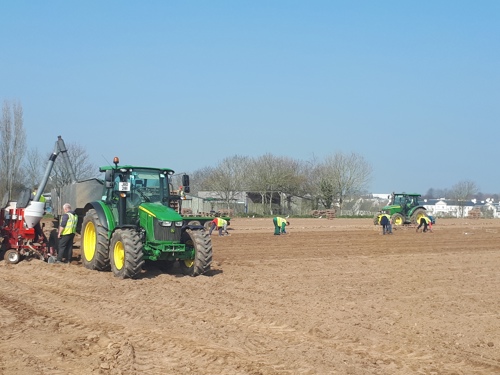
As soon as we move onto larger, flatter fields the whole process speeds up as opening the rows and covering are infinitely quicker using machines.
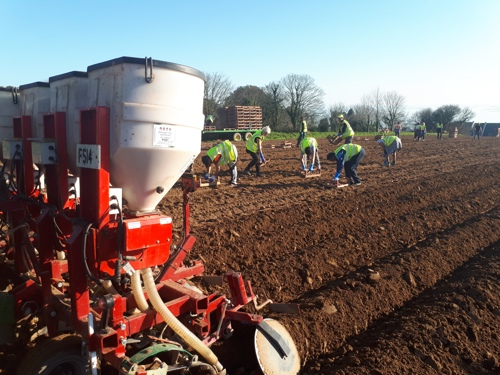
Over the past few years we have adopted a process of placing fertiliser in the rows on the back of a closing frame. The fertiliser prills are loaded into the small hoppers, and this is released at a controlled rate down tubes and placed in the rows around the planted seed, so it is in the growing zone where needed.
This process has helped us reduce the amount of fertiliser applied by over 15% as we no longer spread it on internal headlines where it isn't needed.
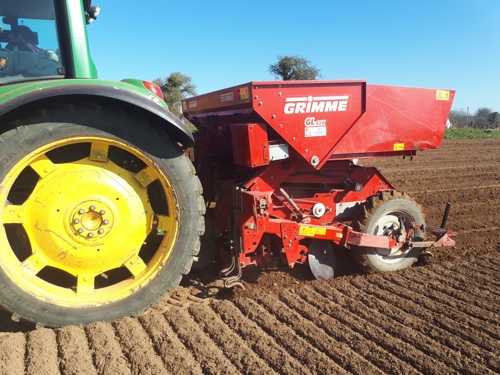
Some fields are planted using automatic planters, which are much quicker and cut out a lot of manual labour. The advantage is of course speed, but this can only be done using seed that has been held in cold stores over the winter and that doesn't have advanced shoots.
The outcome is that these fields will take up to two weeks longer to grow and to be ready to dig.
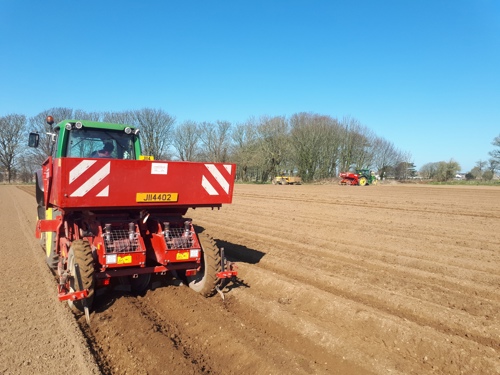
Each year we continue to work closely with Jersey Water as part of an interest group called 'Action for Cleaner Water'. The island has been mapped out to highlight water sensitive areas, and using fertiliser placement is a very positive step.
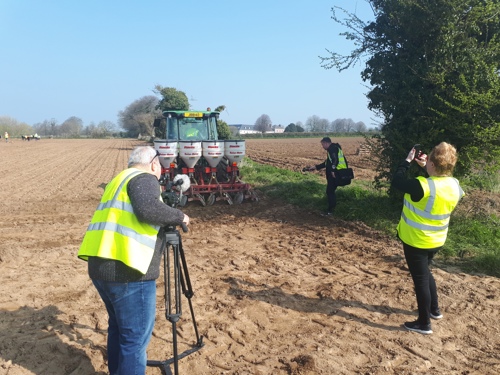
Jersey Water visited us to film fertiliser placement in action as part of a promotional video to highlight the collaborative approach that farmers and Jersey Water take, and this will soon be available to view on their website through this link - https://www.jerseywater.je/acwg/

